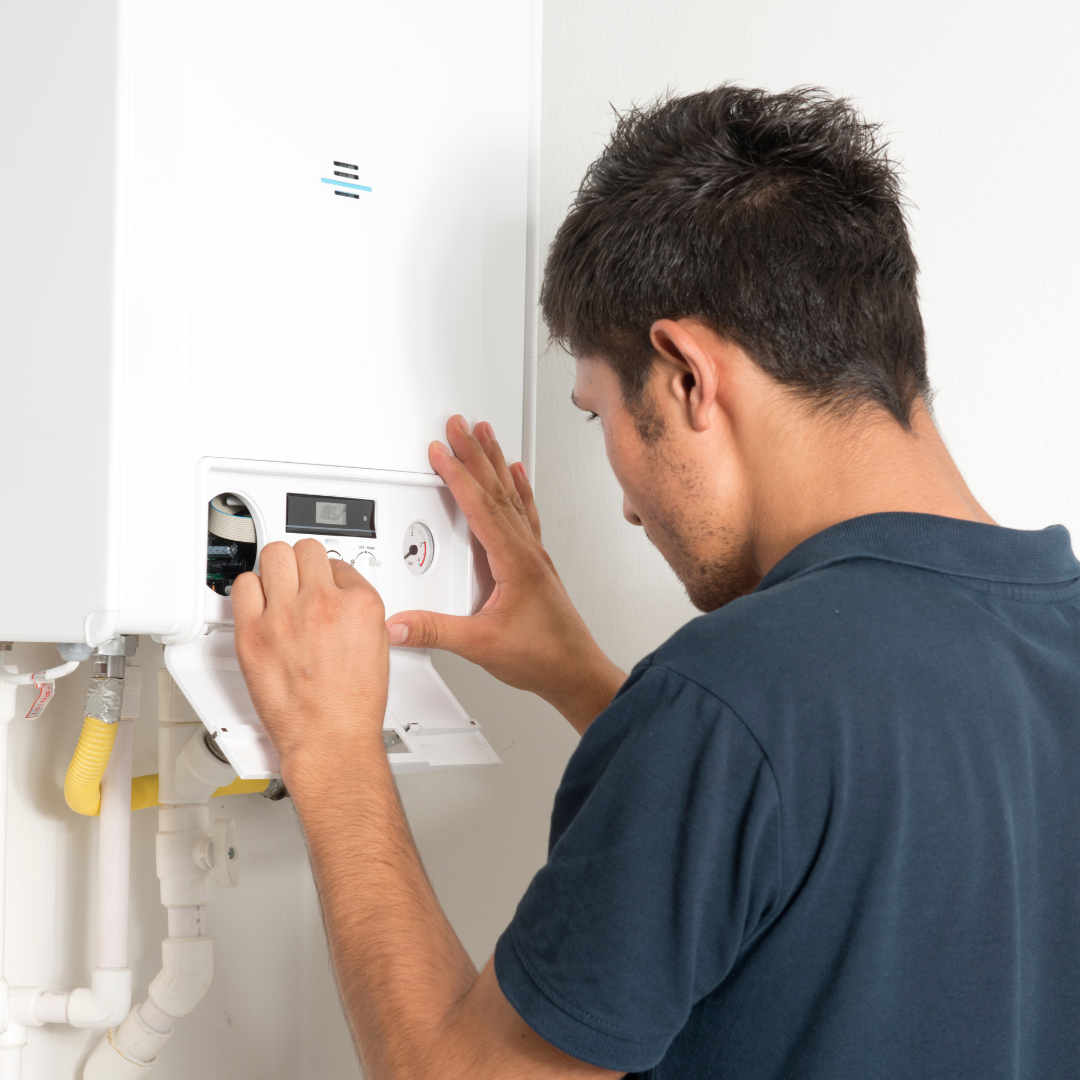With the current cost of living and energy crisis, everyone is trying to find easy ways to cut their energy bills this winter. One of the options currently being talked about is turning down your boiler’s temperature.
In this article, we look into whether this is a good idea or not and what options you have.
The first thing you need to know about is your boiler thermostat.
So, what is a boiler thermostat and what does it do?
Simply put, the boiler thermostat is a control on your boiler. It adjusts the flow temperature, which is the temperature of the water it sends to the radiators.
The water cools as it flows through the radiators before it returns to the boiler. The temperature of the water at this point is the return temperature.
Reducing the flow temperature also lowers the return temperature. All boilers are more efficient when the return temperature is low, and this can save you energy and money.
Are boiler controls different from the central heating controls?
Yes, your boiler controls are different from your central heating controls.
The boiler thermostat changes the temperature of the water in the system, while the central heating controls turn your heating on and off.
It’s important to get your heating controls right first before you try to adjust the boiler’s temperature with your boiler’s thermostat.
How to adjust the boiler’s flow temperature?
Your boiler will have either have:
- a dial to control the flow temperature or
- a digital display with some buttons.
This will depend on what boiler you have.
To adjust the flow temperature, you’ll most likely need to open a flap.
If you have:
- a conventional boiler with a hot water tank, then there will be just one dial or setting to adjust.
- If you have a combi boiler with no hot water tank, then there will be two dials or settings: one for the radiators and one for the hot water. You need to adjust the one with a picture of a radiator next to it, not the one with a picture of a tap, which is for your hot water.
A bit of advice: take a picture before you make any changes, so you know how everything is set. That way you’ll know what to turn it back to if you need to.
What you need to know before turning down or adjusting your boiler’s flow temperature?
If you do decide to turn down your boiler’s temperature, here are some of the options you have.
Option one: turn it down to a level that’s just warm enough and leave it there (this option assumes that the installer set the boiler thermostat to maximum)
If you have a Conventional boiler with a hot water tank you could:
Try turning the boiler’s flow temperature down to 65 degrees (don’t turn it down any lower as your boiler won’t be able to heat your hot water tank to 60 degrees). To keep your hot water supply to your taps safe, the temperature must not be any lower than 65 degrees otherwise there’s a risk of legionella bacteria growing in the tank.
If you have a Conventional boiler with a hot water tank you could:
If you have a combi boiler with no hot water tank, you can turn the radiator’s flow temperature down as much as you like without affecting the hot water. Some people suggest that turning the radiator flow down to 60 degrees is reasonable, but you’ll have to find what works for you by trial and error. Bear in mind there’s a risk of the house getting too cold while you find the right temperature.
Option two: Look at adjusting the temperature occasionally when the weather changes
For this, you will need to work out the different temperate settings depending on the weather.
If you have a combi boiler and the weather is mild, then you’ll be more likely to heat your home with a low flow temperature. This could be around 50-55 degrees. However, if it’s colder you’ll want to set it a bit higher.
As mentioned before, if you have a conventional boiler you can’t go below 65 degrees so it’s unlikely, you’ll be able to do this.
Although this approach will save you more money than option one, there’s more of a risk that you’ll have a cold house at times.
Option three: Look at adjusting the temperature constantly as the weather changes
For this option, you won’t be able to do it on your own. You might be able to get a heating engineer to fit a weather compensator or a load compensator, which will change the flow temperature for you. You can only do this if you have a combi boiler. The engineer will still need to check if your boiler is compatible, and you’ll have to pay to have it fitted.
Doing this will give you the maximum possible savings and should minimise the risk of your house not getting warm enough.
Risks of turning your boiler’s flow temperature down
- Your house or rooms won’t get warm enough
- If your house gets too cold then there’s a significant risk to older people, with health conditions
- Not knowing how to change it back
Further risks:
- Heating controls aren’t set correctly when the boiler thermostat is adjusted. You need to make sure your heating controls are correct to ensure you see the expected outcome.
- If you have a conventional boiler with a hot water tank and it’s turned down below 65 degrees then there is an increase in the risk of legionella bacterial growing in the tank.
- Misunderstanding how to change the boiler thermostat and incorrectly adjusting the settings.
- You already have weather or load compensation. Speak to your installer for guidance on how to adjust your compensator if you think it needs it.
How much money could you save by turning your boiler down?
There are claims for average gas bill savings of between 8-13%.
Research also suggests that turning down the flow temperature improves the boiler efficiency by 4-5%. You may find that your gas use goes down more than this, but that will be because other things are going on that you might not expect or want. For example, your house may be heating up more slowly, or rooms may not be getting quite as warm anymore.
Savings will depend on:
- What your boiler was set to previously
- If your home was too warm before
- How much you experiment with your boiler’s flow temperature.
How to decide whether you should turn the flow temperature down?
- Understand your central heating controls and ensure that you’ve set them correctly.
- Consider the benefits and issues we’ve mentioned and decide if you feel confident adjusting the boiler’s flow temperature.
- Use this handy tool from Nesta to help you try it out.
Energy Saving Trust
You could also be eligible for the Boiler Scheme, so have a look and get in touch!


